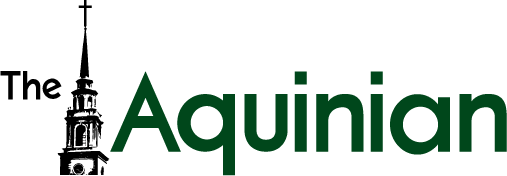St. Thomas University elder-in-residence, Miigam’agan, talked about Indigenous Peoples’ ways of living and looking at the world in her talk titled Nugumijinagig U’ginamuwagnmual, or Matricultural Societies, as part of the Voices from the Longhouse series on March 14.
She said that in Indigenous communities, people introduce themselves by saying where they come from first and then who they are.
“We didn’t have surnames but we had clans,” she said.
She said every civilization has a creation story.
“Our creation stories are what sets the belief systems, our values. It’s just a whole foundation.”
She said Indigenous Peoples believe in rites of passage, which could be described as life stages. There are seven rites of passage of seven years each, and at the end of each passage, a person grows into another stage of their life.
For example, the fourth rite of passage ranges from age 21 to 28 and is characterized by people thinking about commitment.
The star is the structure
Miigam’agan explained the eight-point star, which gives an overview of how political, individual and community living are structured.
It represents the different stages of life. If divided in four sections, the symbol represents what community life looks like when living in harmony with nature. It also shows what an imbalanced community would look like.
Miigam’agan said the symbol is older than colonization.
“It’s the blueprint of who we are, why we are and how we are the way that we are.”
The symbol looks like a circle with an eight-point star inside of it. The star has a centre too.
“Everything is in that circle.”
Each of the four sides of the centre circle is associated with a sacred plant used in Indigenous Peoples’ cultures like tobacco, cedar, sage and sweetgrass. Each side also represents the cardinal points and the seasons.
Miigam’agan also talked about the social structures of Indigenous Peoples, which are centred on relationships.
She said everything an individual does affects 70 per cent of everything around them, including people.
She explained how society is structured with the example of a circle. Children are at the heart of society, followed by elders who represent wisdom and women who represent intuition. Men are the last circle and are society’s protectors.
In the Longhouse, which is the traditional form of Indigenous government, the structure is similar. But each group in society has a different role: children are inheritors, elders are teachers, women are caregivers and men are caretakers.
A matriarchal society
Miigam’agan said Indigenous Peoples believe the universe is female. They see society as matriarchal rather than patriarchal.
“Our worldview and our languages are predominantly female,” she said.
Miigam’agan said Indigenous Peoples’ creation stories and languages, which are also women-centred, were also colonized. But even in English, she said the presence of the female in language can be seen in words like mother nature and mother tongue.
She said Indigenous language is verb-based rather than noun-based.
“Nothing is locked in,” she said.
At the end of her talk, Miigam’agan asked the audience if they had any questions or reflections. She said that’s how culture grows and she enjoys sitting around women’s circles.
“Everyone truly has something to share and weave into the past.”

